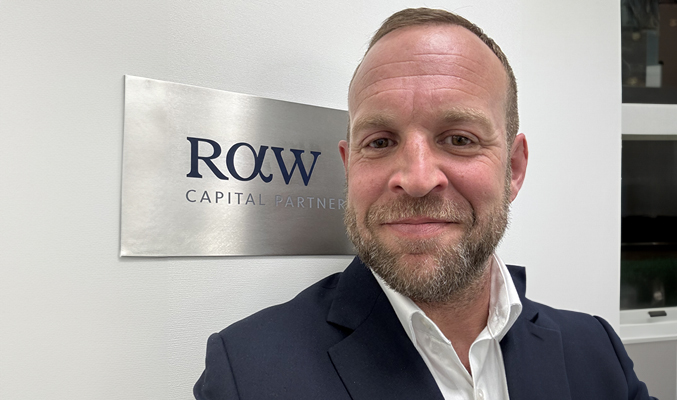Bridging the Gap – bolstering lender and broker relationships post-pandemic
By David Craik

Relationships of all types have been tested during the pandemic including those between bridging brokers and lenders.
When the first lockdown was implemented last March several lenders either pulled out of the market, increased rates and fees or reduced the products they were offering.
The way it was done caused some consternation.
“Only a handful of lenders, including ourselves, were honest in telling brokers that although we were still lending, it would be on a different basis to pre-pandemic,” says Mark Harrison, Director of Business Development, at Stretton Capital. “Other lenders, to their detriment, pulled out without a sorry, goodbye or an explanation.”
As a result, Harrison says, some brokers were left “high and dry” with cases yet to be completed. “It has definitely caused divisions and a lot of brokers won’t forget,” he warns.
With emotions running high it raises the question of what constitutes a strong broker and lender relationship and how they can best be maintained and indeed repaired as we emerge from the crisis.
Communication
For Kim McGinley, director of broker VIBE Finance, good communication are key.
“The lenders that were open and honest with their communication as well as being consistent are the ones we’ll remember. Emails can go back and forth but a quick phone call from an underwriter can resolve things so much more effectively and saves time too,” she says. “The pressure is high now because we’re still coming out of the pandemic and our industry is experiencing unprecedented business volumes. Honest communication is needed in order to avoid serious application delays.”
Andy Reid, Sales Director, at lender TFG Capital, says ‘constant communications’ are needed.
“We need to understand what the broker wants for their client,” he says. “Maybe it is something where speed is a necessity, or it is a complex case where we need to dive deeper and do a bit more due diligence on the client and the asset. Now we are getting back to normality we need, as a lending community, to let brokers know that we are once again open to doing certain deals with certain LTVs.”
Transparency
Transparency is another key to strong relationships, says Reid.
“I’ve built my career on relationships,” he says. “From a lenders perspective you need to know that a broker understands completely what we do, and what type of business we are looking to transact so they know which cases to place with us.”
He says this should cover every aspect of an application – preferred timescales, property details and customer requirements.
“I want all of the information in front of me so I can tell the broker either ‘Yes, this is one we can do or give a quick no,” Reid says. “Brokers don’t want a lender holding on to an enquiry for four days and then saying no. If they do that then the chances are that, if you are initially the favoured lender of choice, they are already four days behind.”
Simon Allen, director at Searchlight Finance, however, sometimes struggles with lenders claims of transparency. “People constantly ring me up and say use us because we are transparent. Well, I look at their website and it doesn’t even tell me what the interest rates are! When it says ‘from’ and ‘up to’, that’s not transparency either,” he says. “There is still a lot of cloak and dagger in the industry and perhaps we need to look at solutions like standard terms sheets.”
Understanding
Talk to lenders and one of their main bugbears are the 20 ‘generic’ style emails they receive from brokers on a single deal. “You can easily spot them,” says Harrison. “I had one this morning. They asked me whether I could give indicative terms but didn’t address the email to me directly. They said the client was looking for a £150,000 loan but didn’t check if we lend on those amounts. Why should I give that the time of day? I concentrate on the people who know us and treat us well.”
Daniel Yeo, founder and managing director of the Specialist Finance Centre, is empathetic.
“If I put myself in the lenders position then yes copying and pasting a generic email would probably wind me up!” he says. “We treat regulated or non-regulated applications the same. We get as much detail as we possibly can so when presenting it to lenders, they can make an informed decision from Day One. I imagine a lot of brokers would give scattered information to get the terms and then when they present it back in full the lenders don’t like what they see and pull out.”
Flexibility
Reid stresses that brokers need to recognise that lending criteria, terms and products don’t always stay constant. He points to the pandemic when lenders funding ability and their appetite for ‘certain types of risk property’ was impacted. “It is an ever-changing thing,” he states.
However, Donna Wells, director at broker F4B, argues that brokers can struggle to get this updated information.
“For brokers who may not specialise in what remains a hugely complex lending environment, it’s not easy to realise exactly what borrowing scenarios any given lender will accept and what they will reject,” Wells says. “Lenders are constantly trying to communicate any changes to their product ranges and criteria tweaks to the intermediary market but if brokers are not writing regular business in the short-term finance sector, the messaging can often get lost or soon become outdated. It’s fair to say that all too many of these opportunities continue to be missed and this is the challenge which lenders face. That is why they rely so heavily on specialist packagers and distributors for most of their business.”
Allen argues that both brokers and lenders could look wider in their search for lender partners. The pandemic, he argues, may have helped.
“Brokers rang their usual four or five favourites and they were all shut. I was in the same position, went on to LinkedIn and found a lender,” he says. “I contacted them and found them to be very adaptive. Before you knew it, I had a completion.”
Yeo, however, says being flexible and starting new relationships can be difficult.
“Unless your lending proposition is something quite unique or you are willing to explain why you are different on Zoom or Teams, you can’t just bombard your way onto a brokers panel,” he says. “If you have got no experience with a new lender then you are potentially exposing your client to a big risk.”
Technology
McGinley says it’s important for lenders to have processes that provide updates to brokers at every stage on bridging cases.
“With the technology that we now all have access to – there are lenders that are really embracing and finding better ways to be more pro-active and effective,” she states.
Indeed, some lenders are introducing customer and legal portals to help clients see the exact stage their loan application has reached as well as electronic signatures, online KYC/AML functions and automatic desktop valuations.
Reid says there are also ample opportunities for brokers to quickly identify lenders key criteria by going online to sites such as Knowledge Bank.
Next Steps
Even after stressing the strength of technology Reid believes more face-to-face meetings when restrictions are eased will be crucial in relationship building. “There is more opportunity to talk freely rather than trying to cram everything into a 15-minute Zoom slot once a month,” he says.
Harrison echoes Reid’s comments about closer engagement.
“We need a dedicated trade association between brokers and lenders involved in property,” he says. “There should be some discussion about setting one up even if it is just an informal gathering every quarter. They could sound off on what is and isn’t working and what they are looking for.”
One anonymous broker however scoffed at the need for face-to-face meetings saying that ‘if brokers and lenders were all in the same room it would all end up in a huge slanging match’.
“Most brokers are lazy,” the broker said. “They want to do as least amount of work for as much money as possible. I went to an event once where brokers were asked what the main driver was in choosing a lender. One chap, with a glass of red wine in his hand, shouted out – ‘The one who pays the most commission’.”
Even Harrison has some sympathy with this. “The problem is that brokers have a very short memory. They always go where the money is.”
Allen of Searchlight Finance says both brokers and lenders need to ask themselves some strong questions.
“I know of a broker with at least two failed brokerages behind him. But lenders of decent names will still deal with him just to get money out of the door,” he says. “The market needs to clean itself up and only deal with brokers who have gone through an FCA process with credit broking as a minimum.”
If they can do all this then developing trusted relationships will pay off.
“For non-regulated bridging you get 50 plus lenders all competing for one piece of business,” says Yeo. “If the rates and fees are all pretty much on a par then it’s the ones who make the effort with the relationship that get the business.”

David Craik is a freelance journalist writing news, feature articles, blogs and guides for national newspapers and magazines. His main areas of interest include finance, property and investments.










You must be logged in to post a comment.